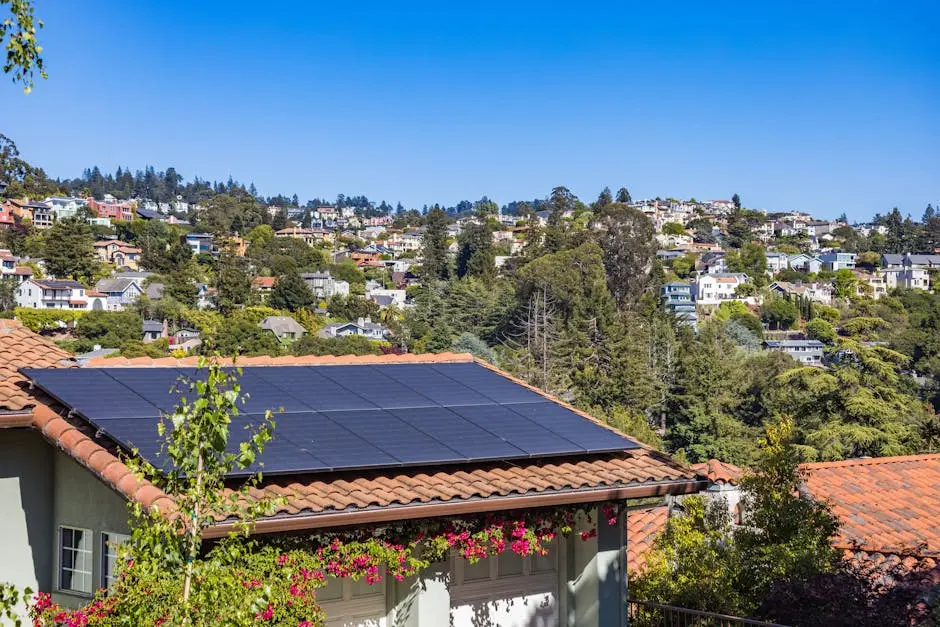Harnessing solar energy is a smart way to reduce your electricity bills and contribute to a greener planet. However, ensuring that you get the maximum savings from your solar panels requires some careful planning. In this blog, we’ll explore effective strategies to help you optimize your solar savings and make the most out of your investment.
Evaluate Your Energy Usage
Understanding your home’s energy needs is the first step to optimizing your solar savings. Analyze your past energy bills to determine usage patterns and identify areas where consumption can be reduced. Beyond looking at historical data, consider factors that may influence future energy needs, such as potential expansions or the addition of new family members. By having a clear picture of your energy habits, you can tailor your solar system to best suit your needs, ensuring you’re not generating energy that goes to waste or spending on a larger system than necessary.
Many homeowners overlook simple ways to cut back on energy usage before installing a solar system. Implementing energy-saving practices like unplugging devices not in use, using programmable thermostats, and replacing outdated appliances with energy-efficient models can significantly reduce your baseline consumption. These actions not only decrease your reliance on solar but also amplify your savings over time, creating a more cost-effective solar investment.
Choose the Right Solar System
Selecting the appropriate solar system that matches your energy needs ensures you don’t overspend on capacity you won’t use. Consider factors such as your roof size, location, and climate to make an informed choice. For instance, homes in sunnier regions might benefit more from lower-cost panels with lower efficiency, while those in cloudier climates might prioritize high-efficiency panels. Maximizing Your Home’s Value: The Surprising Impact of Solar Tax Credits advises consulting with solar energy experts to tailor the setup to your geographical and personal energy requirements.
It’s also wise to think about future needs when choosing your solar system. If you plan to purchase an electric vehicle or expand your home, these changes could impact your energy use significantly. By considering such factors, you ensure that your solar investment aligns with both your present and future living situation, delivering continuous savings.
Optimize Panel Placement
The placement of your solar panels can significantly affect their efficiency. Ensure your panels are installed in a spot that gets maximum sunlight exposure throughout the day for better energy generation. This may require a professional assessment to identify parts of your roof that are least affected by shade from trees or other structures. Minimizing shaded areas maximizes the sunlight your panels can capture, translating directly into more energy and savings.
Additionally, the angle and tilt of your panels can make a difference. Adjusting panels seasonally to match the sun’s path can result in optimal energy production all year round. Incorporating a solar tracker, although an extra cost, can automate this process and ensure your panels get the best sun exposure with minimal manual intervention.
Take Advantage of Incentives and Rebates
Many governments offer incentives, tax credits, and rebates for solar panel installations. Research and apply for these opportunities to lower your initial costs and boost your overall savings. A key solar savings strategy is utilizing the Federal Investment Tax Credit (ITC), which can cover a significant portion of your solar system cost. Certain states and municipalities also offer additional incentives, which can further reduce the upfront burden. Don’t miss out on these potential savings—every dollar counts.
Aside from government incentives, some utility companies offer rebates for excess energy fed back into the grid—commonly known as net metering. This can be an attractive opportunity to earn credit on your energy bill and enhances the economic viability of investing in solar power. Ensure you understand the terms of such programs as they vary widely by provider and region.
Implement Energy-Efficient Practices
Complement your solar power system with energy-efficient practices like using LED lighting, energy-efficient appliances, and smart home systems to reduce overall consumption and increase savings. Embracing technology such as smart thermostats and energy management systems can automate household energy use, maximizing efficiency when it matters most. These additions are relatively small in cost compared to the savings they can generate in conjunction with your solar setup.
Another effective approach is conducting an energy audit to uncover hidden inefficiencies. This audit can highlight areas where insulation improvements or sealant applications can keep heating and cooling costs down, thereby reducing the strain on your solar system in managing temperatures. Implementing these changes can substantiate your solar savings strategy.
Regular Maintenance and Monitoring
Routine maintenance of your solar panels, such as cleaning and periodic inspection, ensures they operate at optimal efficiency. Utilize monitoring systems to track performance and identify any potential issues early. Dust, foliage, or snow accumulations can impede electricity production, necessitating regular cleaning to ensure unobstructed performance. Scheduled maintenance checks conducted by professionals can also preemptively address and fix possible technical issues before they expand.
Investing in a quality solar monitoring system can provide real-time data on your panels’ performance, allowing you to quickly identify and rectify any inconsistency. Cloud-based platforms provide easy access to track daily energy production and consumption, and notify you of any anomalies. This proactive approach prevents minor issues from escalating into significant production losses.
Incorporating these practices doesn’t only prolong the life of your system but also ensures a steady stream of savings as you continue to generate clean energy efficiently. It’s not just about having solar panels but ensuring that they are working to the best of their ability for maximum returns.
Maximize Your Solar Savings Today
Maximizing solar savings involves a blend of strategic planning, regular maintenance, and staying informed about the latest in solar technology and policies. By taking these steps, you can not only save more money but also contribute positively to the environment. Remember, every small effort adds up to significant savings and a sustainable future.

















